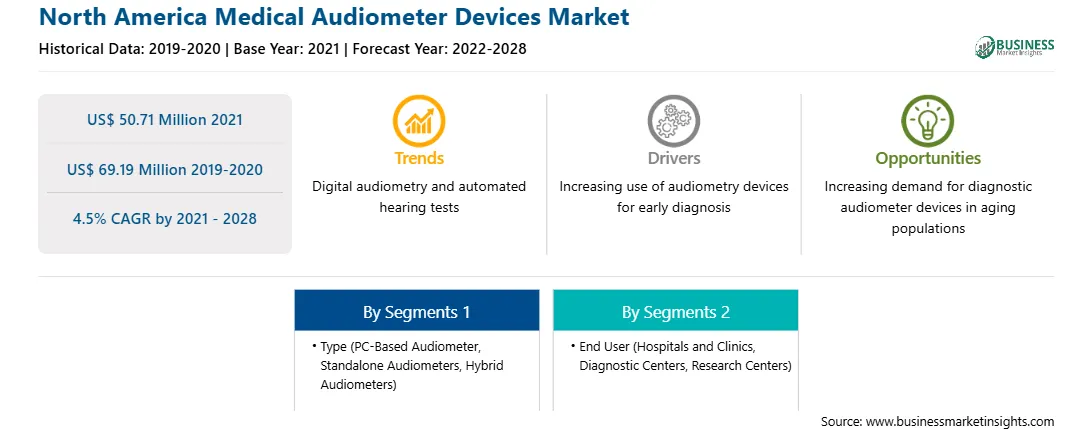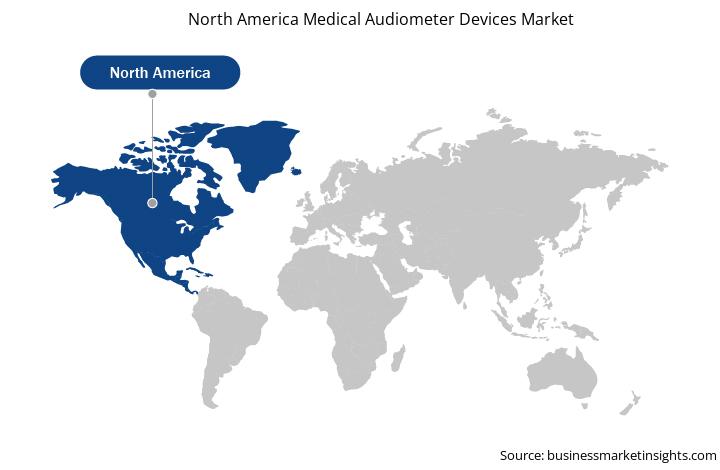Elderly population, which is prone to several hearing ailments, is increasing. According to the Department of Economic and Social Affairs, United Nations, the number of people of age 65 and above is expected to increase to 1.5 billion by 2050. As per the estimates of the National Institute on Deafness, in the US, ~1 in 3 people belonging to age group 65–74 have hearing loss, and ~50% of these people are older than 75 and have difficulty hearing. The National Institute on Deafness & Other Communication Disorders states that at least 10 million adults in the US (i.e., 6%) are aged 70 or below and 40 million (i.e., 24%) have hearing loss in one or both ears, caused by exposure to noise. The elderly people are more likely to have hearing disability than younger people, and the effect of the disease on quality of life is particularly deep in this population. With an increase in geriatric population, the prevalence of the hearing disorders has increased, thereby propelling the demand for hearing diagnostic tools, including medical audiometer devices.
Amidst the COVID-19 crisis, the healthcare institutions have witnessed a decrease in inpatient visits to clinics to prevent the spread of the COVID-19 in the first and second quarters of 2020. As per the recent study by CDC, the number of medical emergency department (ED) visits has declined 42% during the early COVID-19. As a result, the number of elective procedures such as audiometric examinations performed per week in hospitals and clinics has decreased over time. The COVID-19 pandemic has negatively impacted the hearing healthcare practices, and those with hearing loss around the region. Social distancing has made it extremely difficult to diagnose patients accordingly and provide them with the support needed. However, market players have adopted an innovative approach of tele-audiology solutions to deal with hearing loss patients. For instance, Satellite Tele-Audiology Solutions, part of the Inventis company, is said to be the first technology of its kind. This technology allows audiologists to interact and remotely perform complete hearing assessments on their patients in real time. The ANSI-certified audiometer with an embedded audio-video platform gives the professional the control needed to interact, while testing and maintaining social distancing with patient. The testing software has a built-in video conferencing system (via App) that helps make it easy for the patient to be tested. Such developments carried out by the leading market players has resulted in the minimal impact of the COVID-19 pandemic on medical audiometer devices market.
Strategic insights for the North America Medical Audiometer Devices provides data-driven analysis of the industry landscape, including current trends, key players, and regional nuances. These insights offer actionable recommendations, enabling readers to differentiate themselves from competitors by identifying untapped segments or developing unique value propositions. Leveraging data analytics, these insights help industry players anticipate the market shifts, whether investors, manufacturers, or other stakeholders. A future-oriented perspective is essential, helping stakeholders anticipate market shifts and position themselves for long-term success in this dynamic region. Ultimately, effective strategic insights empower readers to make informed decisions that drive profitability and achieve their business objectives within the market.

| Report Attribute | Details |
|---|---|
| Market size in 2021 | US$ 50.71 Million |
| Market Size by 2028 | US$ 69.19 Million |
| Global CAGR (2021 - 2028) | 4.5% |
| Historical Data | 2019-2020 |
| Forecast period | 2022-2028 |
| Segments Covered |
By Type
|
| Regions and Countries Covered | North America
|
| Market leaders and key company profiles |
The geographic scope of the North America Medical Audiometer Devices refers to the specific areas in which a business operates and competes. Understanding local distinctions, such as diverse consumer preferences (e.g., demand for specific plug types or battery backup durations), varying economic conditions, and regulatory environments, is crucial for tailoring strategies to specific markets. Businesses can expand their reach by identifying underserved areas or adapting their offerings to meet local demands. A clear market focus allows for more effective resource allocation, targeted marketing campaigns, and better positioning against local competitors, ultimately driving growth in those targeted areas.

The North America Medical Audiometer Devices Market is valued at US$ 50.71 Million in 2021, it is projected to reach US$ 69.19 Million by 2028.
As per our report North America Medical Audiometer Devices Market, the market size is valued at US$ 50.71 Million in 2021, projecting it to reach US$ 69.19 Million by 2028. This translates to a CAGR of approximately 4.5% during the forecast period.
The North America Medical Audiometer Devices Market report typically cover these key segments-
The historic period, base year, and forecast period can vary slightly depending on the specific market research report. However, for the North America Medical Audiometer Devices Market report:
The North America Medical Audiometer Devices Market is populated by several key players, each contributing to its growth and innovation. Some of the major players include:
The North America Medical Audiometer Devices Market report is valuable for diverse stakeholders, including:
Essentially, anyone involved in or considering involvement in the North America Medical Audiometer Devices Market value chain can benefit from the information contained in a comprehensive market report.